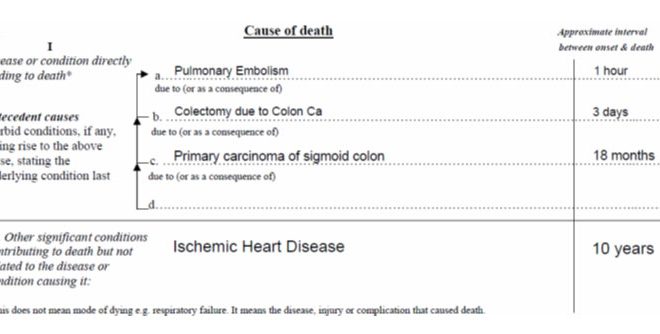The Cholesterol Controversy – The Series
Albert Cilia Vincenti
In the previous instalment we learnt how Ronald Krauss, one of the most respected nutrition researchers, had worked out that LDL-cholesterol consisted of two sub-fractions, one with large soft particles and the other with small dense particles, and that the small dense particle sub-fraction was the one linked to atherosclerosis and not the other. He also noted that saturated fats increased the “good” sub-fraction and lowered the “bad” sub-fraction, and that carbohydrates did the opposite. This suggested that carbohydrates were implicated in atherosclerosis rather than saturated fat.
Krauss did not push his LDL sub-fraction findings too hard with his colleagues, even after they had been confirmed by others,1 lest they might get very upset at the implication that they had been wrong about LDL-cholesterol all along. Indeed, most of his peers found it convenient to ignore his findings. However, in 1996 he managed to make the point in the American Heart Association’s (AHA) guidelines that saturated fatty acids in diary, meat and palm oil were different and did not have the same effect on blood lipids.2 It took another decade for other guidelines to incorporate these fine points about different saturated fats, and then only in France. The French 2010 official dietary advice noted that only saturated fats found predominantly in palm and coconut oil could possibly be linked to atherosclerosis due to their effect on LDL-cholesterol, and that the saturated fat found in meat, dairy and eggs was completely exonerated.
In the end, however, Krauss lost the battle to traditionalists, and in 2006 the AHA guidelines swung back from Krauss’s recommendation to consume 8-10% of total calories from saturated fat.3 In 2013, the American College of Cardiology (ACC), updating the coronary artery disease treatment recommendations, issued draconian advice – all “at risk” adults (some 45 million healthy people) were told, as a precautionary measure, to cut their saturated fat intake down to an unprecedented 5% to 6% of calories – approaching a vegan diet. This recommendation was justified quoting the DASH and OmniHeart studies, in which subjects were fed diets containing 5% to 6% saturated fat and their LDL-cholesterol levels dropped significantly.4,5 This could be interpreted as a positive only if Krauss’s work was ignored, along with other trials showing LDL wasn’t a meaningful indicator of risk for most people. The ACC also had to ignore the fact that subjects in these two trials saw their HDL-cholesterol fall significantly (a bad indicator), that there was no improvement in their markers for diabetes, and that they lost no weight.
In making its very low saturated fat recommendations, the ACC stated it did not consider the impact of its proposed diet on diabetes or metabolic syndrome – a truly starling decision, given that these conditions are closely linked with atherosclerotic cardiovascular disease. Furthermore, the ACC guidelines ignored several decades’ worth of large trials, including MRFIT and the Women’s Health Initiative, which collectively tested more than 61,000 men and women for more than 7 years, and which failed to show any benefits of a low-saturated fat diet. Instead, the two trials quoted by ACC tested only 590 people over 8 weeks.
Moreover, the ACC continued to extrapolate that dietary LDL-lowering had the same biological significance as statininduced LDL-lowering. There is no data to support this assumption, and the significance of LDL as a biomarker of heart attack risk is increasingly doubtful. Unfortunately, the AHA 2015 (updated 12th August) dietary guidelines have adopted the ACC’s 5% to 6% saturated fat recommendation.
By ignoring all the diet and LDL-cholesterol evidence, including Krauss’s LDL sub-fractions work, the AHA/ACC have preserved LDL as their favoured biomarker, as though the last 20 years of science have never happened. The rationale for their recommendations remains more political and financial than scientific. Indeed, LDL-cholesterol has a following and a long history; doctors understand it, governments have entire bureaucracies committed to lowering it, academics have invested their careers in it, and pharmaceutical companies have promoted it.
In a highly controversial move, the ACC 2013 guidelines did appear to downgrade LDL-cholesterol slightly by eliminating the specific numerical treatment targets which had been in place since 1986 (total cholesterol <5.17mmol/L; LDL 0.91mmol/L; fasting triglycerides 0.45–1.69mmol/L). They also promoted “non-HDL-cholesterol” as a new additional biomarker. This is calculated by subtracting HDL from total cholesterol but, like LDL, its accuracy significantly drops when triglycerides are high.
These changes seem to be in the right direction for understanding atherosclerosis, but forces separate from science may have been at work here too. A cynical observer might point to the statin drugs’ patents which have expired in 2013 and that, as such, incentives for pharmaceutical companies to continue favouring LDL were therefore reduced.
Many diet and disease experts, including Krauss, are disappointed by the continued focus on LDL-cholesterol. When in 2006 the AHA guidelines undid all of Krauss’s work on saturated fat, he is said to have become disenchanted with the dietary guideline process and ramped down his activity within the AHA. Indeed, in 2011, he gave up a coveted spot on its expert panel since he could not endorse the direction in which it was heading.
To be continued….


